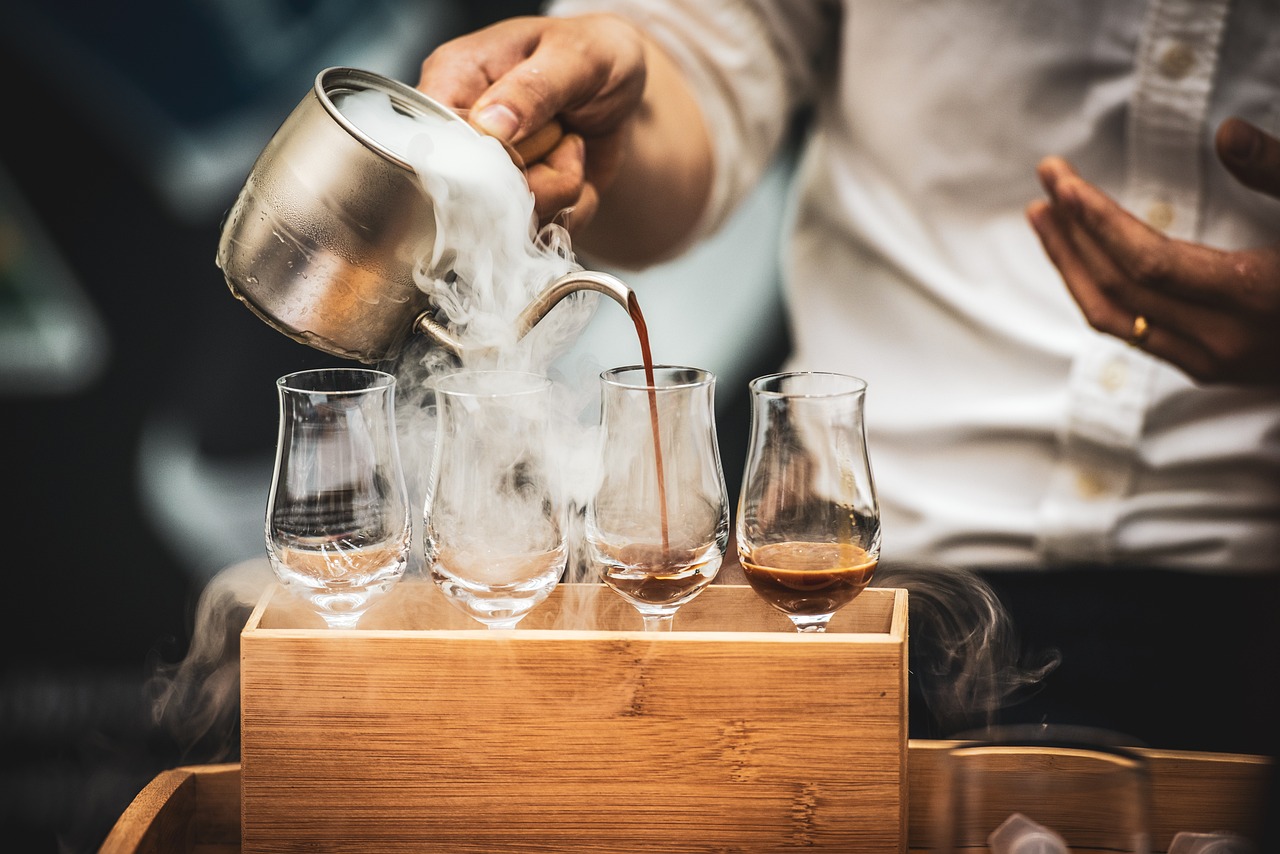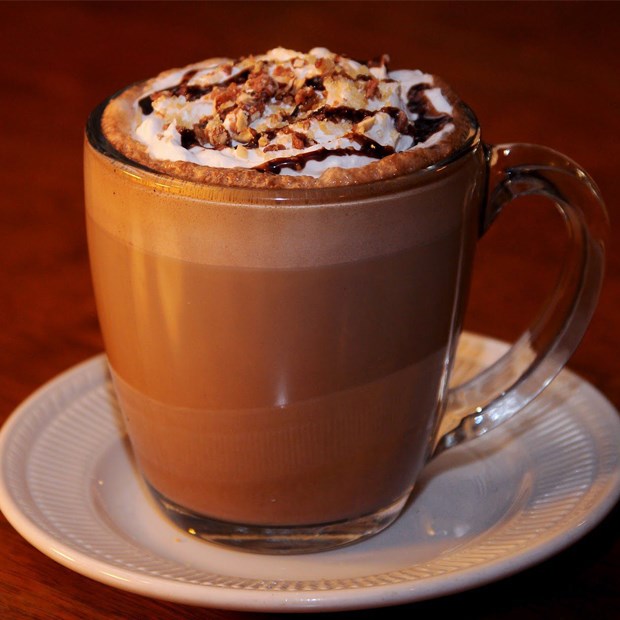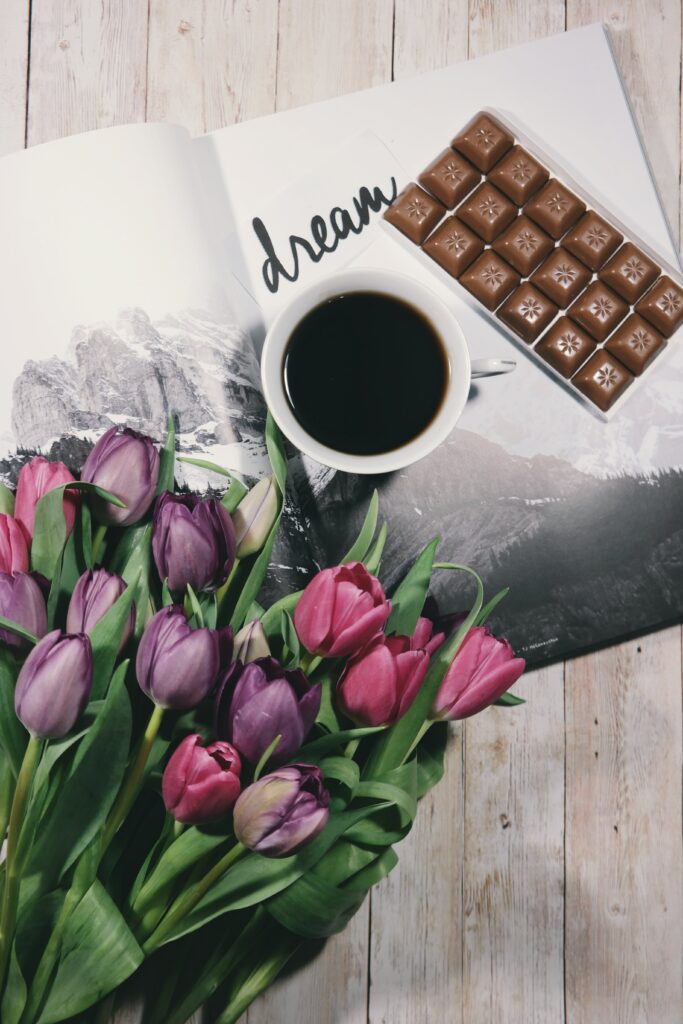Introduction to Mocha vs Chocolate
Overview of coffee and chocolate
Coffee and chocolate are two popular commodities consumed by people all over the world. Coffee is a brewed drink made from roasted coffee beans, while chocolate is a sweet treat made from cocoa beans. Both coffee and chocolate have unique flavors and aromas that attract enthusiasts.
Historical significance of coffee and chocolate
Both coffee and chocolate have a rich history, spanning centuries and continents. Coffee originated in Ethiopia and was first cultivated in Yemen during the 15th century. It quickly gained popularity in the Arab world and eventually spread to Europe, where it became a staple beverage. Similarly, chocolate has ancient roots in Mesoamerica, with the Mayans and Aztecs using cocoa beans to make a bitter drink. The beans were later introduced to Europe by Spanish explorers and underwent processes to make it more palatable, resulting in the creation of modern-day chocolate.
While both coffee and chocolate have been enjoyed for centuries, they differ in their consumption patterns and applications. Here is a comparison between the two:
| Aspect | Coffee | Chocolate |
|---|---|---|
| Preparation | Brewed with hot water | Melted and combined with other ingredients |
| Consumption | Hot or cold beverages | Solid confectionery |
| Flavor | Bitter, acidic, or sweet | Sweet, rich, or creamy |
| Varieties | Arabica, Robusta, etc. | Milk chocolate, dark chocolate, white chocolate, etc. |
| Uses | Energizing, socializing, morning ritual | Indulgence, baking, desserts |
In conclusion, coffee and chocolate hold historical significance and continue to be beloved by people around the world. While coffee is typically consumed as a beverage, chocolate is enjoyed in various forms of confectionery. The distinct flavors and aromas of both commodities offer unique experiences to those who savor them.


Coffee: Origins and Characteristics
Coffee beans: Arabica vs Robusta
Coffee can be made from different types of beans, with the most common ones being Arabica and Robusta. Arabica beans are considered to be of higher quality, offering a more complex and nuanced flavor profile. They have lower acidity levels and a smoother taste. On the other hand, Robusta beans have a stronger, more bitter flavor and higher caffeine content. They are often used in blends to add intensity and crema to the coffee.
Different coffee brewing methods
There are various ways to brew coffee, each yielding a different flavor and aroma. Some popular methods include:
- Drip brewing: This method involves pouring hot water over ground coffee in a filter, allowing it to gradually drip into a pot or carafe. It is a simple and convenient method that produces a smooth and balanced cup of coffee.
- French press: With this method, coarsely ground coffee is steeped in hot water for a few minutes before being pressed down with a plunger. This results in a full-bodied and flavorful coffee with a rich mouthfeel.
- Espresso: Espresso is a concentrated form of coffee that is brewed by forcing pressurized hot water through finely ground coffee. It is known for its intense flavor, crema, and versatility in creating various coffee-based beverages.
- Pour-over: This method involves slowly pouring hot water over a filter cone with ground coffee. It allows for precise control over the brewing process, resulting in a clean and crisp cup of coffee.
Each brewing method brings out different characteristics in the coffee, allowing for a personalized and tailored brewing experience.
In conclusion, coffee has a rich history and offers a wide range of flavors and brewing methods to cater to different preferences. Whether it’s enjoying a smooth cup of Arabica coffee or savoring the boldness of Robusta, coffee provides a delightful and invigorating experience for coffee lovers around the world.


Chocolate: Origins and Varieties
Cacao beans: Criollo, Forastero, and Trinitario
Chocolate, a beloved treat enjoyed by many, is made from cacao beans. There are three main types of cacao beans used in chocolate production:
- Criollo: Known for its delicate and complex flavor, criollo beans are considered the rarest and most prized variety. They have a low bitterness and are often used in high-quality and artisan chocolates.
- Forastero: The most common variety of cacao beans, forastero beans have a more robust flavor profile. They are easier to grow and have a higher yield, making them suitable for mass production.
- Trinitario: Considered a hybrid of criollo and forastero beans, trinitario beans combine the favorable qualities of both varieties. They have a balanced flavor and are widely used in chocolate-making.
Different types of chocolate
There are various types of chocolate available, each with its own unique characteristics and uses. Here are some popular varieties:
- Dark chocolate: Made with a higher percentage of cacao, dark chocolate has a rich and intense flavor. It is often enjoyed for its bittersweet taste and is known for its potential health benefits due to its higher cocoa content.
- Milk chocolate: Combining cacao with milk solids and sugar, milk chocolate has a creamy and sweet taste. It is milder compared to dark chocolate and is commonly used in confectionery and baking.
- White chocolate: Unlike other varieties, white chocolate does not contain cocoa solids. It is made from cocoa butter, sugar, and milk solids, resulting in a smooth and sweet flavor. Some consider it more of a confection than actual chocolate.
- Ruby chocolate: A relatively new addition to the chocolate family, ruby chocolate has a distinct pinkish hue and a fruity flavor. It is made using special cocoa beans and has gained popularity for its unique taste.
In conclusion, chocolate has a rich history and a wide range of flavors to satisfy different palates. From the rare and delicate criollo beans to the widely-used forastero and the balanced trinitario, each variety brings its own characteristics to the final chocolate products. Whether it’s the boldness of dark chocolate, the sweetness of milk chocolate, the creaminess of white chocolate, or the fruity notes of ruby chocolate, there is a chocolate variety to suit every taste preference.


Flavor Profiles: Mocha and Chocolate
Taste characteristics of mocha
Mocha, a popular coffee flavor, has its own distinct taste characteristics. It is known for its combination of rich chocolate and earthy undertones. The flavor profile of mocha can be described as:
- Rich and bold: Mocha has a robust flavor that stands out in coffee beverages.
- Chocolatey: The chocolate notes in mocha offer a smooth and indulgent taste.
- Earthy: Mocha also has earthy undertones, adding depth to its flavor.
- Bittersweet: The combination of chocolate and coffee in mocha results in a balanced sweetness with a hint of bitterness.
Flavor profiles of different chocolate varieties
When it comes to chocolate, there are various flavor profiles based on the type of chocolate used. Here are the distinct characteristics of different chocolate varieties:
- Criollo: Known for its delicate and complex flavor, criollo chocolate offers a mild bitterness with fruity and floral notes.
- Forastero: With a stronger and more robust flavor, forastero chocolate has a slightly bitter taste with hints of earthiness.
- Trinitario: Combining the best of criollo and forastero, trinitario chocolate provides a balanced flavor with moderate bitterness and fruity undertones.
- Dark chocolate: With a higher percentage of cacao, dark chocolate offers an intense and bittersweet taste.
- Milk chocolate: Creamy and sweet, milk chocolate has a milder flavor compared to dark chocolate.
- White chocolate: Smooth and sweet, white chocolate lacks cocoa solids and has a distinct creamy taste.
- Ruby chocolate: Known for its unique pinkish hue and fruity flavor, ruby chocolate offers a refreshing and slightly tangy taste.
In conclusion, mocha and chocolate have their own distinct flavor profiles. Mocha brings together rich chocolate and earthy undertones, creating a bold and bittersweet taste. On the other hand, there are various chocolate varieties, each with its own unique characteristics. From the delicate and complex flavor of criollo to the intense richness of dark chocolate, there is a chocolate variety to suit every palate.


Health Benefits of Coffee
Potential health benefits of consuming coffee
Consuming coffee has been associated with several potential health benefits. Research suggests that moderate coffee consumption can have the following positive effects on the body:
- Antioxidant properties: Coffee is rich in antioxidants, which help to protect the body against free radicals and reduce the risk of chronic diseases such as cancer and heart disease.
- Improved cognitive function: Caffeine in coffee can enhance brain function, improve focus and alertness, and potentially lower the risk of neurodegenerative disorders, such as Alzheimer’s and Parkinson’s disease.
- Increased metabolism: Coffee has been shown to boost metabolism and increase fat oxidation, which may aid in weight loss and weight management.
- Improved physical performance: Caffeine in coffee can enhance athletic performance, reduce fatigue, and improve endurance by stimulating the nervous system and mobilizing fatty acids for fuel.
- Mood enhancement: Coffee consumption has been associated with a reduced risk of depression and improved overall mood, thanks to its ability to increase the production of feel-good neurotransmitters such as dopamine and serotonin.
Caffeine content and its effects on the body
Coffee contains caffeine, a natural stimulant that affects the central nervous system. Here are some key points to know about caffeine and its effects:
| Effects of caffeine | Recommended daily limit |
|---|---|
| Increased alertness and energy levels | Up to 400 milligrams |
| Improved focus and concentration | |
| Decreased fatigue and drowsiness | |
| Increased heart rate and blood pressure | |
| Potential sleep disturbances |
It is important to note that caffeine sensitivity and tolerance levels can vary from person to person. It is recommended to limit caffeine intake to moderate levels and avoid consuming coffee later in the day to prevent sleep disturbances.


Health Benefits of Chocolate
Potential health benefits of consuming chocolate
Consuming chocolate, particularly dark chocolate with high cocoa content, has been associated with numerous potential health benefits. Research suggests that moderate consumption of chocolate can have the following positive effects on the body:
- Antioxidant properties: Like coffee, chocolate is rich in antioxidants, which help protect the body against damage caused by free radicals and reduce the risk of chronic diseases such as cancer and heart disease.
- Improved cardiovascular health: The flavanols in chocolate have been shown to promote heart health by improving blood flow, reducing inflammation, and lowering blood pressure.
- Enhanced cognitive function: Some studies suggest that the flavonoids in chocolate may improve cognitive function, including memory, focus, and attention.
- Mood enhancement: Chocolate contains compounds such as phenylethylamine and serotonin, which can stimulate the production of endorphins and boost mood. It may also have anti-depressant effects.
- Reduced risk of stroke: The flavonoids in chocolate have been associated with a lower risk of stroke, potentially due to their ability to improve blood flow and blood vessel function.
Different types of chocolate and their impact on health
The health benefits of chocolate can vary depending on the type and quality. Here’s a comparison of different types of chocolate:
| Type of Chocolate | Cocoa Content | Health Benefits |
|---|---|---|
| Dark Chocolate | 70% or higher | High in antioxidants, good for cardiovascular health, potential cognitive benefits. |
| Milk Chocolate | 30-45% | Contains less cocoa and more sugar, fewer health benefits compared to dark chocolate. |
| White Chocolate | No cocoa | Contains no cocoa solids, therefore lacks most of the health benefits associated with chocolate. |
It’s important to note that chocolate should be consumed in moderation as it is still high in calories and can contribute to weight gain if consumed in excess. Opting for dark chocolate with higher cocoa content and minimal added sugars is generally recommended for maximum health benefits.


Coffee and Chocolate Pairing
Factors to consider when pairing coffee and chocolate
When it comes to pairing coffee and chocolate, there are a few factors to consider to ensure the best flavor combination. Here are some key elements to keep in mind:
- Intensity: Consider the intensity of both the coffee and the chocolate. A strong, bold coffee may overpower a delicate chocolate flavor, while a light coffee may be overwhelmed by a rich, dark chocolate. Aim for a balance in intensity for a harmonious pairing.
- Flavors: Take into account the flavors present in both the coffee and the chocolate. Look for complementary flavors or contrasting flavors that can create a unique and enjoyable experience. For example, a fruity coffee can pair well with a dark chocolate with berry undertones.
- Roast: The roast of the coffee can greatly impact the pairing. Lighter roasts tend to have brighter and more acidic flavors, while darker roasts have bolder and more robust flavors. Consider how the roast profiles of both the coffee and chocolate will interact.
Popular combinations and recommended pairings
Here are some popular combinations and recommended pairings to inspire your coffee and chocolate pairing journey:
- Dark chocolate with a strong espresso: The intensity of both the dark chocolate and the strong espresso creates a bold and satisfying combination.
- Milk chocolate with a medium roast: The creaminess of the milk chocolate pairs well with a medium roast coffee, allowing the sweetness of the chocolate to shine through.
- White chocolate with a light roast coffee: The delicate flavors of white chocolate can be enhanced by a light roast coffee that adds brightness and acidity.
- Flavored coffee with complementary chocolate: Consider pairing flavored coffee, such as hazelnut or vanilla, with chocolates that complement the flavors. For example, hazelnut coffee can be paired with a milk chocolate hazelnut bar.
Remember, coffee and chocolate pairing is subjective, and personal preferences may vary. It’s always fun to experiment and try new combinations to find your perfect pairing. Enjoy the flavors and savor the experience!
Coffee vs Chocolate: Which is Better?
Comparison of flavor, aroma, and texture
When comparing coffee and chocolate, it is important to consider their flavor, aroma, and texture. Each has its own unique characteristics that make it enjoyable in its own right.
Flavor:
Coffee has a wide range of flavors, from bold and bitter to smooth and fruity, depending on the type of beans used and the brewing method. On the other hand, chocolate offers a rich and creamy taste with varying degrees of sweetness, depending on the cocoa content and the type of chocolate.
Aroma:
Coffee is known for its aromatic qualities, with different brewing methods releasing distinct aromas that can be nutty, floral, or even chocolatey. Chocolate, on the other hand, has a pleasant aroma that can range from earthy to sweet, depending on the type and quality of the chocolate.
Texture:
Coffee is typically enjoyed as a liquid, providing a smooth and silky texture. Chocolate, on the other hand, can have a range of textures, from creamy and velvety to crunchy and chewy, depending on the type of chocolate and any added ingredients.
Discussion on personal preferences
When it comes to choosing between coffee and chocolate, personal preferences play a significant role. Some individuals may lean towards the invigorating and energizing effects of coffee, while others may prefer the indulgent and comforting qualities of chocolate.
Individuals who enjoy the ritual of brewing coffee and savoring its complex flavors may find coffee to be their beverage of choice. On the other hand, those who have a sweet tooth and appreciate the versatility of chocolate for both snacking and dessert options may lean towards chocolate.
Ultimately, the choice between coffee and chocolate comes down to personal taste and the desired experience. Some people may even prefer both and find joy in combining the two for a delightful coffee and chocolate pairing.


Conclusion
Summary of the key points discussed
In comparing coffee and chocolate, it is important to consider their flavors, aromas, and textures. Coffee offers a wide range of flavors, from bold and bitter to smooth and fruity, while chocolate provides a rich and creamy taste with varying degrees of sweetness. Coffee is known for its aromatic qualities, with different brewing methods releasing distinct aromas, while chocolate has a pleasant aroma ranging from earthy to sweet. Coffee has a smooth and silky texture when enjoyed as a liquid, whereas chocolate can have various textures, from creamy and velvety to crunchy and chewy.
When it comes to personal preferences, some individuals may prefer the invigorating and energizing effects of coffee, while others may lean towards the indulgent and comforting qualities of chocolate. Those who enjoy the ritual of brewing coffee and appreciating its complex flavors may choose coffee, while those with a sweet tooth and who value the versatility of chocolate may opt for it.
Final thoughts on coffee and chocolate
Ultimately, the choice between coffee and chocolate boils down to personal taste and the desired experience. Some people may even find joy in combining the two for a delightful coffee and chocolate pairing. Both coffee and chocolate have their unique qualities that make them enjoyable, and it is a matter of individual preference. Whether you prefer the aroma and boldness of coffee or the sweetness and variety of chocolate, both can be savored and appreciated in their own right.
FAQ: Mocha vs Chocolate – Deciphering Coffee and Chocolate
- What is Mocha?
Mocha refers to a type of coffee beverage that combines espresso and chocolate. It is often topped with frothed milk or whipped cream for added richness. The name “mocha” originally derives from the port city of Mocha in Yemen, which was known for its coffee exports. Today, however, the term “mocha” generally refers to the flavor combination of coffee and chocolate, rather than the specific origin. - What is Chocolate?
Chocolate, on the other hand, is a delicious treat made from cocoa beans. It is produced by roasting and grinding cocoa beans, then adding sugar and sometimes milk to create a smooth and flavorful texture. Chocolate is available in various forms including bars, truffles, and hot cocoa, and is enjoyed worldwide as a delightful indulgence. - Is Mocha a type of chocolate?
No, mocha is not a type of chocolate. While mocha incorporates chocolate into the coffee, it does not itself represent a chocolate-based product. Mocha refers to a specific flavor combination of coffee and chocolate, often showcased in coffee beverages, desserts, or even flavorings for ice creams and cakes. - How does the taste of Mocha differ from Chocolate?
Mocha has a distinct taste resulting from the harmonious blend of coffee and chocolate flavors. The coffee brings a rich, bitter undertone, while the chocolate adds sweetness and depth. The combination creates a unique flavor profile that is both robust and smooth. In contrast, chocolate itself typically offers a sweet, smooth, and sometimes slightly bitter taste, depending on the percentage of cocoa used. - Which one is better for health – Mocha or Chocolate?
When it comes to health benefits or drawbacks, it largely depends on the ingredients and proportions used. Both mocha and chocolate can have beneficial properties when consumed in moderation. Dark chocolate, with a high percentage of cocoa, is known for its antioxidant properties and potential heart health benefits. However, it’s important to consider added sugars and fats in some mocha beverages, which may lead to excess calorie intake. - What are the popular variations of Mocha?
Mocha has become a popular choice for coffee enthusiasts, and as such, numerous variations have emerged. Some popular varieties include white chocolate mocha, mint mocha, caramel mocha, or even frozen mocha drinks like Frappuccinos. These variations often incorporate different flavors and toppings, providing a diverse range of taste experiences.
In conclusion, mocha and chocolate both bring distinct flavors to the table. Mocha is a coffee-based beverage with chocolate for added depth, while chocolate itself is a delightful treat made from cocoa beans. Understanding the differences and similarities between these two delectable treats can enhance your appreciation of their unique characteristics. So, whether you prefer a warm cup of mocha or a piece of indulgent chocolate, both choices are sure to satisfy your cravings.



Hey there! If you’re a fan of authentic Mexican cuisine, you’re in for a treat with Humberto Cruz at pointcafeny.com. They take immense pride in serving their customers with home-cooked, genuine Mexican dishes crafted with the finest ingredients. From flavorful salsa to mouthwatering tamales and enchiladas, they offer an experience that brings the taste of family food from back home right to your table. Don’t forget to check out their tempting Daily Specials for a delightful culinary adventure!
